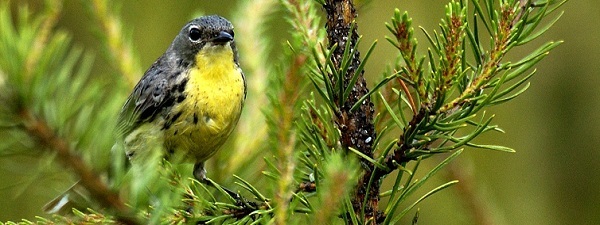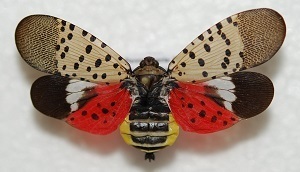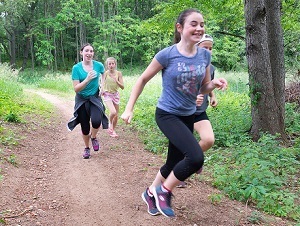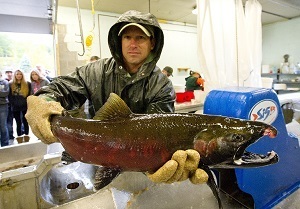|
|
|
|
News Digest - Week of Sept. 17, 2018

|
|
Here's a look at some of this week's stories from the Department of Natural Resources:
See other news releases, Showcasing the DNR stories, photos and other resources at michigan.gov/dnrpressroom.
 Spotted lanternfly, a leaf-hopper native to China and India, and Japanese chaff flower, a plant from East Asia, have been added to the state’s invasive species watch list due to the threats they pose to agriculture and the environment.
Already found in Delaware, New Jersey and Virginia, spotted lanternfly is spreading through eastern Pennsylvania. Nymphs (immature insects) and adults suck sap from stems and leaves of more than 70 plants and crops including grapes, apples, hops, walnuts and other hardwood trees.
Japanese chaff flower displaces native plants by forming large, dense stands in floodplains, forested wetlands and disturbed habitat. It currently is found along the Ohio and Big Sandy rivers, reaching counties in nine states including Illinois, Indiana and Ohio.
Spotted lanternfly nymphs are wingless and beetle-like, with black and white spots, developing red patches as they mature. Adults are roughly 1 inch long. Their folded wings are gray to brown with black spots. Open wings reveal a yellow and black abdomen and hind wings that are bright red with black spots transitioning to black and white bands at the edge.
Though spotted lanternflies cannot fly long distances, they lay eggs on nearly any smooth surface, including cars, trailers and outdoor furniture. Freshly laid eggs have a gray, waxy, putty-like coating, while hatched eggs look like rows of brownish, seed-like deposits.
|
 “If you’re visiting areas known to be infested with spotted lanternfly, just be sure to thoroughly inspect vehicles or anything left outside before returning to Michigan,” said Joanne Foreman, invasive species communications coordinator with the DNR.
Japanese chaff flower grows up to 6 feet tall, with opposite, simple leaves and a bottle brush-shaped green flower with no petals. Deer heavily browse this plant, and seeds spread by attaching to animals and clothing.
“Spotted lanternfly and Japanese chaff flower aren’t known to be in Michigan, but because they’re confirmed in nearby states and because of the potential damage they can cause, early detection is vital,” Foreman said.
For more information on identifying invasive species or to report sightings of spotted lanternfly or Japanese chaff flower, visit michigan.gov/invasives or contact Joanne Foreman, 517-284-5814.
|
 When it comes to quality trails, many Michigan residents already know there’s no place like home. With more than 12,500 miles of state-designated trails that connect communities and provide health and economic benefits, it’s easy for hikers, bikers, equestrians, snowmobilers, off-roaders, mountain bikers and even kayakers to find a trail just about anywhere in the state.
Michigan Trails Week (proclaimed this year by Gov. Rick Snyder as Sept. 22-29) is a perfect time for first-time trail users and seasoned outdoor explorers to get out and enjoy the Trails State. Here are just a few reasons why:
- Michigan's Iron Belle Trail, the longest designated state trail in the nation, is a 2,000-mile hiking and biking journey from Ironwood in the western Upper Peninsula to Belle Isle Park in Detroit, connecting more than half of the state’s counties.
- A growing partner-based water trails program, building on the popularity of paddle sports as one of the fastest-growing recreation activities, as well as Michigan’s thousands of miles of rivers and streams and more miles of Great Lakes coastline than any other state.
- Thousands of miles of ORV trails that are continually upgraded through funding generated by the sale of ORV licenses and trail permits.
- More than 2,600 miles of rail-trail (leading the nation), old railroad lines that have been converted for recreational use.
- Thousands of miles of equestrian, snowmobile and water trail opportunities in some of the state’s most scenic areas.
- The Pure Michigan Trail and Trail Town designation program, announced earlier this year, highlighting some of the state’s best trail resources.
“Michigan offers four full seasons of opportunity to enjoy trails,” said DNR state trails coordinator Paul Yauk. “Michigan Trails Week is a good time for people to start out autumn on the right foot, celebrating the thousands of miles of scenic trails statewide.”
Michigan Trails Week ends Saturday, Sept. 29, which is National Public Lands Day – traditionally a day for volunteer-led efforts to beautify and build awareness about the value and extent of the country’s public lands.
Learn more about events and opportunities at michigan.gov/trailsweek or michigan.gov/dnrtrails or contact Doug Donnelly at 517-284-6109.
|
 Michigan's seasonal salmon runs are a busy time for DNR fisheries staff. During the runs, large numbers of chinook and coho salmon return to their native streams to spawn, and afterward they die.
The DNR maintains several sites (weirs) to block these fish and then collect their eggs and milt (sperm) for use in state fish hatcheries.
“Egg collection is one of the most important things we do to support an ample, healthy salmon population,” said Aaron Switzer, manager of the DNR’s northern Lower Peninsula hatcheries. “But once our egg-take needs are met, the salmon in prime physical condition are available for sale to the public.”
When fall salmon runs are done and egg collection is completed, Switzer said that people will be able to purchase the surplus salmon from a small number of retailers in the northern Lower Peninsula. These are fish that have been harvested by the DNR at weirs in the same area.
The preparation and sale are handled by American-Canadian Fisheries, a private vendor that assists the DNR with the salmon harvest.
ACF harvests the salmon for human- and pet-food markets, as well as excess eggs for bait and caviar markets. ACF pays the DNR a flat per-pound rate for the salmon and eggs collected, and then makes suitable-quality fish available wholesale to distributors who market the fish. This year’s retailers are located in the northern Lower Peninsula.
Interested in purchasing some of the surplus salmon? The DNR recommends directly contacting individual retailers to confirm the timing and pricing of a purchase.
For more information, contact Aaron Switzer, 231-325-4611, ext. 15 or Elyse Walter, 517-284-5839.
|
PHOTOS AVAILABLE: High-res versions of the images used above are available in this photo folder.
|
 Want your shot at a hunting prize package valued at over $4,000, plus licenses for elk, bear, spring and fall turkey and antlerless deer and first pick at a managed waterfowl hunt area? For just $5, buy a Pure Michigan Hunt application.
|
 Ever wonder what goes into running state parks? Finalizing a park management plan typically takes about a year, and you can help. Check out plans for several state parks, including Maybury and Warren Dunes, in process right now.
|
|
|
|
|
|
MANAGE SUBSCRIPTIONS | UNSUBSCRIBE ALL | CONTACT US | FEEDBACK | HELP
|
|
|